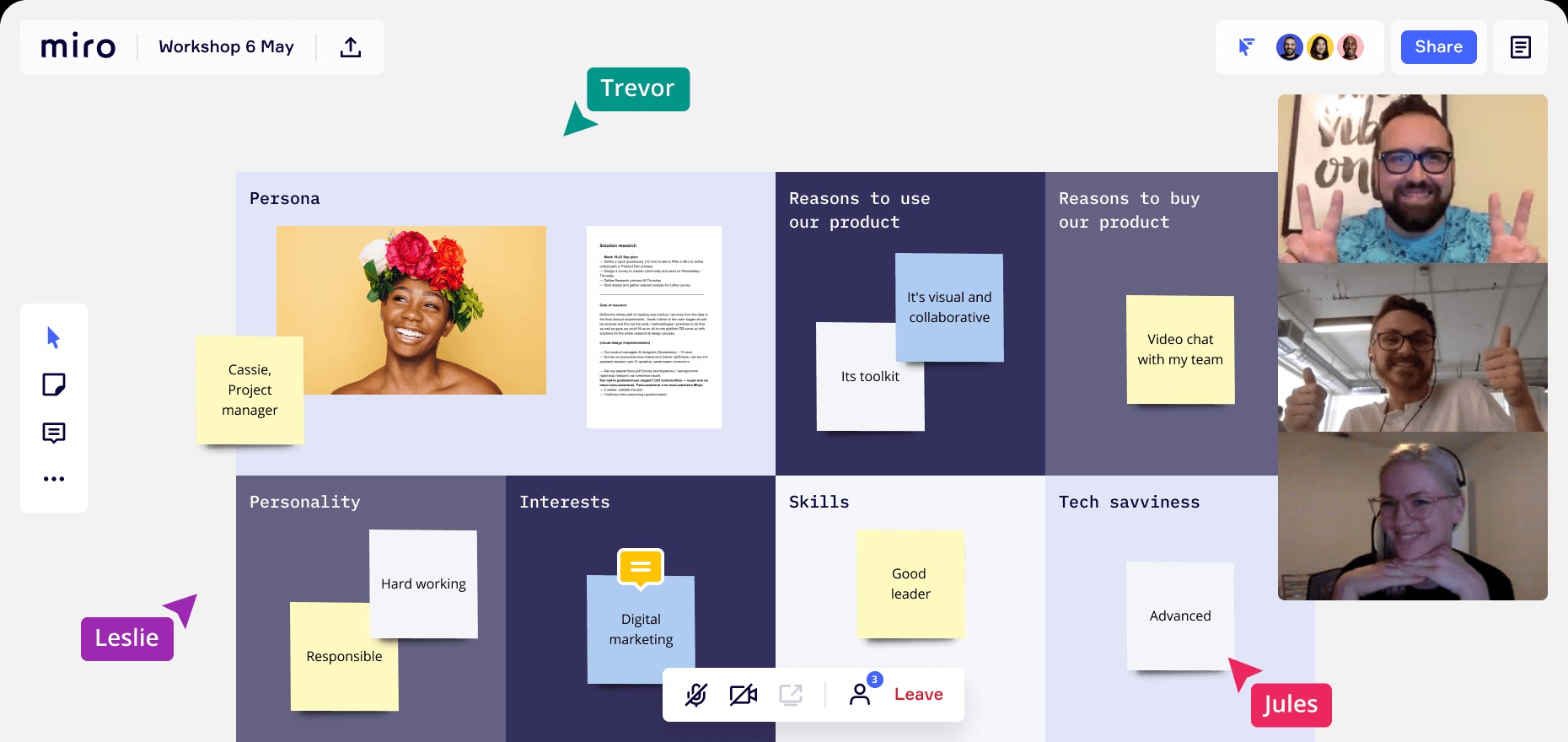
In 2019, convincing my clients to collaborate online on visual elements was quite hard. In 2020, for obvious reasons known by everyone, it’s much easier to explain to customers what are the advantages of online collaboration. They are still in time to move to a remote environment in a very fast way, adopt methodologies and start using all sorts of software like Miro’s online whiteboard or any of the video call tools, for better distance work.
1. Ensure you get the right setup
To work remotely and collaborate with people who are not in the same room as yourself, you should ensure that no technical issues will get in the way. Test your audio and video setup before getting started, you don’t want to lose precious meeting time and get everyone stressed. Don’t underestimate the importance of having good quality camera and microphone for better interactions. Obviously, having a good connection to the Internet is also crucial, don’t be greedy on the wrong things.
2. Prepare your meetings well
This tip goes for all meetings, but it is specially right for online visual collaboration. For an online visual meeting, you should ensure that everything you want to say is planned out, so you can make the points you wanted to make.
Ever been in a meeting where you felt that nothing of importance was said and that you wasted your time? If it happened, it was because nobody was ready for the working session. Don’t worry though, being ready for working together doesn’t mean that you need to prepare for hours, making a checklist in fifteen minutes is often enough to be ready. You can also dig into preparation principles for a good starting point.
3. Choose the right tools
In terms of tools, it is mostly the software that is worth mentioning. For visual collaboration online, Miro is the perfect companion. Better than your average whiteboard, Miro is an infinite canvas that helps you ideate, strategize, get organized, and work with your team.

You can kick off a project even faster by selecting one of Miro’s many pre-built templates. From business model canvases and user story maps, to fishbone diagrams, mind maps and more, templates provide an easy way to get your team ideating and collaborating.
When you need to meet with your team, use Zoom (which can be integrated with the mentioned whiteboard): after months of confinement, the company has improved its service, becoming the undisputed video call software -the easiest to use and the most secure, and the one that offers more integrations and personalization.
4. Ask the right questions
To collect feedback on your work, there are questions that will help you collect much better answers than others. Explain your design decisions to try to answer questions before they come, and be very specific on the type of feedback you need. For example, asking “What do you think of this logo design?”, you should write “I chose this font for this reason and that color for that reason, do you think it’s a good choice?”.
5. Follow-up
When the meeting is over, don’t wait for the next meeting to act upon what has been suggested and do everything you can immediately, your future self will thank you later. If you do this, not only you are already mentally involved in this task, which will make you more productive, but your colleagues or clients will also be ready and knowing what you are talking about.
Conclusion
The world is ready for online meeting and visual communication through the Internet now, so make the best of it. Use the tips given in this article wisely and you will become a more productive designer.

